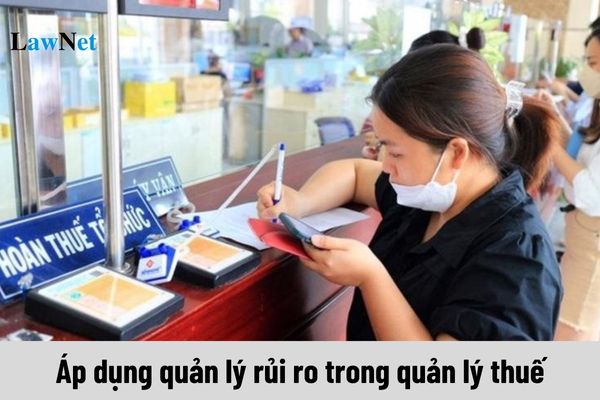What are procedures for applying risk management in tax administration in Vietnam?
What are procedures for applying risk management in tax administration in Vietnam?
Based on the provisions of Article 6 Circular 31/2021/TT-BTC, the application of risk management in tax administration by the tax authorities is carried out following these steps:
Step 01: Assess the situation, determine objectives, and risk management requirements
The tax authorities review common risks and violations by taxpayers in implementing the provisions of Article 17 Law on Tax Administration 2019 or current regulations to identify the principal risks that need to be addressed, high-risk taxpayers, and the direction for handling.
Step 02: Organize the collection and processing of risk management information
Risk management information is collected and processed according to the provisions in Chapter 2 Circular 31/2021/TT-BTC.
In the case where incorrect or incomplete information is detected during risk analysis, taxpayers are responsible for providing, explaining, or supplementing information and documents as required within the notice period given by the tax authorities to ensure an accurate assessment of tax law compliance and risk classification.
Step 03: Establish, update indicators for analyzing and evaluating tax law compliance, and classify taxpayers' risk levels
Based on the evaluation results of the situation, objectives, and requirements for risk management defined in Step 01, risk management information, and ICT application, to establish and update indicators and criteria weights used for evaluating and classifying tax law compliance levels and taxpayers' risk levels.
Step 04: Analyze and evaluate tax law compliance; determine taxpayers' risk levels; determine risk levels in tax administration operations; manage risk profiles for key monitoring cases
Taxpayers are segmented according to conditions suitable for tax management requirements in each period when analyzing and evaluating tax law compliance and taxpayers' risk levels.
The analysis and classification of tax law compliance levels and taxpayers' risk levels are conducted using the methods specified in Article 5 Circular 31/2021/TT-BTC.
Step 05: Based on the determined risk levels; evaluate the taxpayers' law compliance to apply tax management measures and develop an overarching plan to enhance overall compliance among taxpayers.
Step 06: Monitor, update, and evaluate feedback information on the implementation results of tax management measures.
Step 07: Collect, process, use, store information; direct, guide adjustments, and supplement the application of appropriate risk management to ensure effective tax administration.

What are procedures for applying risk management in tax administration in Vietnam? (Image from Internet)
What are regulations on compliance assessment and classification of taxpayers’ compliance and risks in Vietnam?
Based on the provisions of Article 5 Circular 31/2021/TT-BTC, compliance assessment and classification of taxpayers’ compliance and risks are determined using one or a combination of the following three methods:
(1) Scoring and classification by scores.
(2) Machine learning method.
(3) Ranking method by category.
What are procedures for collection and processing of risk management information in Vietnam?
Risk management information in tax administration is collected and processed in accordance with the provisions of Article 8 Circular 31/2021/TT-BTC as follows:
(1) Sources of information collection
- From information systems within the tax authorities;
- From cooperation with agencies, units under the Ministry of Finance, and relevant ministries and sectors in exchanging and providing information for tax administration work;
- From information exchange cooperation with foreign tax authorities and competent authorities as per the law;
- Receiving information from state agencies, organizations, and individuals as per the law;
- Information related to taxpayer activities collected during tax administration;
- Purchasing information as per the Law on Tax Administration and its guiding documents;
- Receiving relevant tax information from abroad and international organizations provided under international treaties to which Vietnam is a signatory;
- From other relevant information sources as prescribed by law.
(2) Methods of information collection
- Providing and exchanging in electronic data, electronic documents, emails, exchanges via the General Department of Taxation's electronic portal; messages, and calls to officially published telephone numbers by the tax authority;
- Providing and exchanging through written documents, telegrams, telegraphs, faxes, and paper documents;
- Direct exchanges based on recorded minutes confirmed by related parties; dispatching representatives for work, verification, information and document collection; organizing conferences, and other forms.
(3) Processing collected information
- Evaluating the relevance of information to needs and usage purposes; considering the reliability and accuracy of the information;
- Classifying, arranging, storing information from sources into different groups for information exploitation and analysis purposes;
- Analyzing information, considering, detecting factors constituting the content of information for risk management purposes;
- Summarizing, linking relevant factors identified through analysis to clarify the content and value of collected information for risk classification and tax law compliance evaluation of taxpayers.

